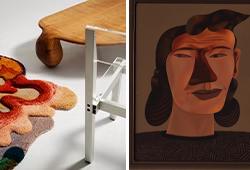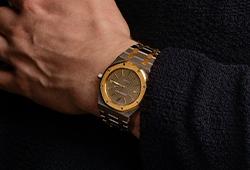Bruno Liljefors
"Steglitsor" (Goldfinches)
Signed Bruno Liljefors and dated -88. Oil on board 27 x 36 cm.
Saleroom notice
Förtydligande/tillägg till den kortfattade informationen i den tryckta katalogen: Införselmoms tillkommer på klubbat pris. För ytterligare information vänligen kontakta kundservice, alternativt +46 8-614 08 00.
Import VAT
Import VAT (12%) will be charged on the hammer price on this lot. For further details please contact customer service +46 8-614 08 00.
Provenance
Bukowski Auktioner, Stockholm, Sale 475, "Internationella höstauktionen", 30 Oct 1990, lot 74; J.E. Safra Collection (acquired at the above Sale).
Literature
Allan Ellenius, "Bruno Liljefors. Naturen som livsrum", 1996, illustrated full page in colour p. 40.
More information
“Goldfinches" is a prime example of Bruno Liljefors’ painting at its best. The small, refined and intimate cut-outs from nature dating from the 1880s are also some of the artist’s best-loved and most sought-after works. In these daringly cropped compositions the artist gets incredibly close to his subject, depicting the varied fauna of the Uppland countryside. The composition model bears clear traces of influences from contemporary French painting, and, not least, the Japanese woodcuts which were ‘à la mode’ in the 1880s, although Liljefors himself denied ever having studied Japanese art. When he replicates these forested slopes, fields and open meadows of his home turf, teeming with wildlife, he sometimes, however, chooses “steep" angles and surprising asymetrical slants, with flowers, blades of grass or, as in the present work, thistles (whose calligraphic representation is reminiscent of Oriental art...) with a pair of goldfinches right in the foreground.
Artist
Bruno Liljefors is the Swedish artist best known for his nature and animal motifs, especially in dramatic situations. Liljefors started with studies at the Academy of Arts in 1879, and continued 1882 in Düsseldorf where the studies revolved around animal painting. The journey then continued to Venice, Rome, Naples, Paris and Grez. Once back in Sweden, he began to draw and paint animals, especially cats and small birds, from the beginning in intimate interaction with nature. He then moved on to broader depictions of wild animals and nature, of seascapes with seabirds and of dramatic scenes of battles between birds. Liljefors is known as our country's foremost animal painter with a large production. Liljefors depicted, in contrast to the "idyllic" animal painting, the animals everyday life with a focus on movement, anatomy and their adaptation to the landscape. This is where the greatness of his painting lies, in the ability to show the animals in their proper environment. He has achieved this by hunting and observing. Well-known works of art are the paintings "Rävfamilj" (1886) and "Havsörnar" (1897), as well as the sculpture "Lek" (1930) at Stockholm Stadium. Liljefors is mainly represented at the National Museum, Waldemarsudde and the Thielska gallery in Stockholm.
Read more



































